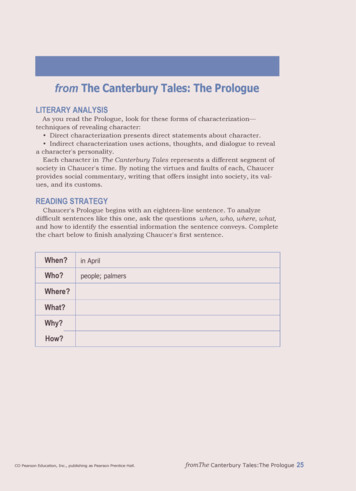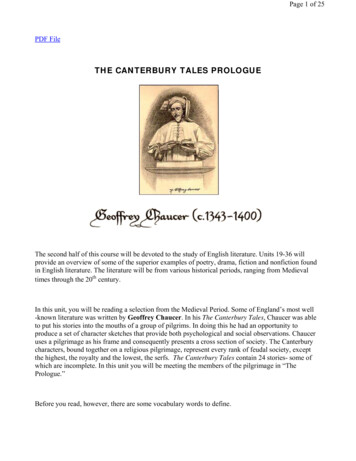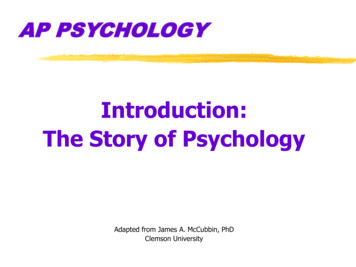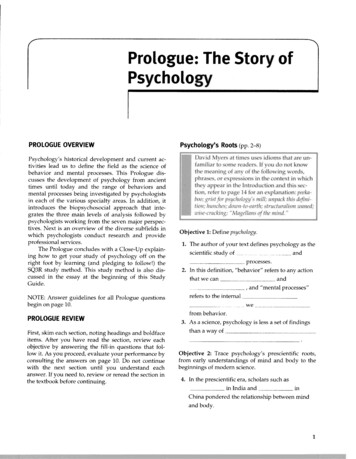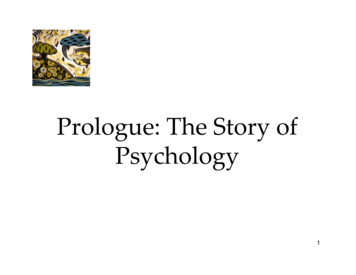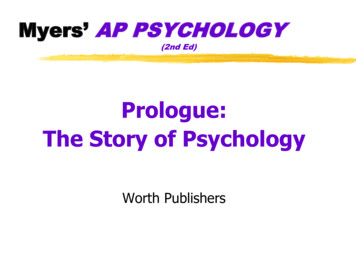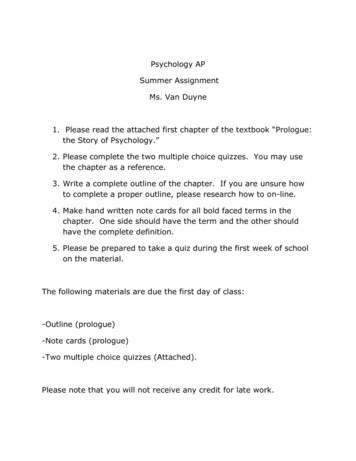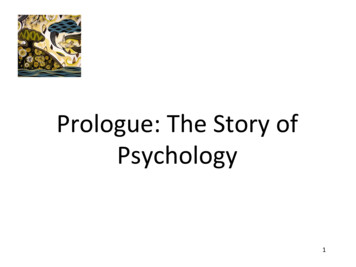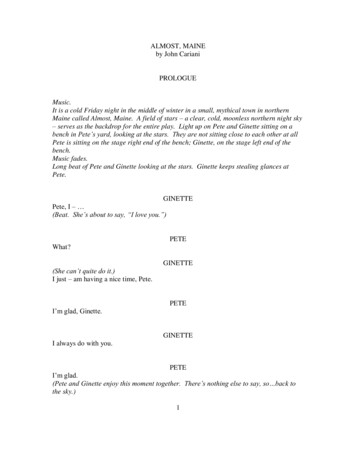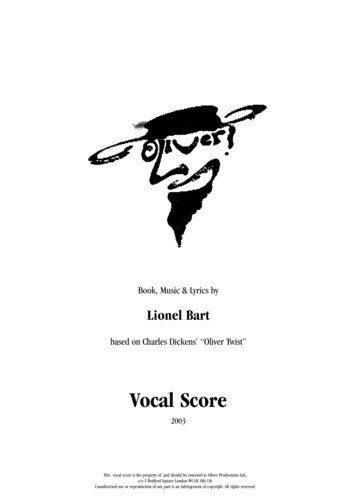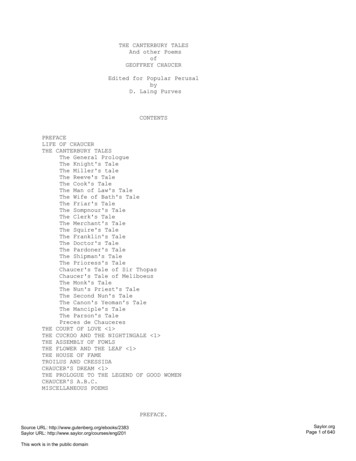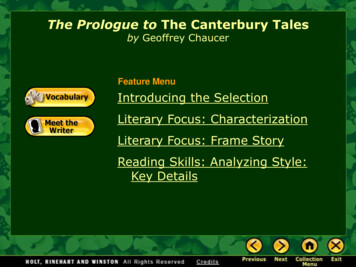
Transcription
The Prologue to The Canterbury Talesby Geoffrey ChaucerFeature MenuIntroducing the SelectionLiterary Focus: CharacterizationLiterary Focus: Frame StoryReading Skills: Analyzing Style:Key Details
The Prologue to The Canterbury Talesby Geoffrey ChaucerChaucer’s Canterbury Pilgrims (1810) by William Blake. Engraving.
The Prologue to The Canterbury Talesby Geoffrey ChaucerFor the most part, only the light characterstravel. Who are you that have no task tokeep you at home?—Ralph Waldo Emerson (1803–1882)
The Prologue to The Canterbury Talesby Geoffrey ChaucerTake a TourIf you went on a tourtoday, what types ofpeople would you meet?Do you think you mightcome across a “character”or two?Chaucer’s characters are the kinds of people hewould have known in real life and observed ridingtoward Canterbury on the old pilgrimage road.
The Prologue to The Canterbury Talesby Geoffrey ChaucerChaucer used the East Midland dialect of MiddleEnglish. This dialect was the most commoncolloquial language at the time and became thebasis for modern English.
The Prologue to The Canterbury Talesby Geoffrey ChaucerTwenty-nine pilgrims are on their way to the shrineof Saint Thomas à Becket in Canterbury.The time is April, and theplace is the Tabard Inn inSouthwark (SUTH erk), justoutside London.LondonCanterbury[End of Section]
The Prologue to The Canterbury TalesLiterary Focus: CharacterizationChaucer uses indirect characterization when hetells how each character looks and dressesThis yeoman wore a coat and hood of green,And peacock-feathered arrows, bright and keen speaks and actsHer greatest oath was only “By St. Loy!” thinks and feelsAnd gladly would he learn, and gladly teach.
The Prologue to The Canterbury TalesLiterary Focus: CharacterizationChaucer also uses direct characterization, whenhe comes right out and tells us what a character’snature is—virtuous, vain, clever, and so on.There was a Friar, a wanton one and merry,A Limiter, a very festive fellow.In all Four Orders there was none so mellow,So glib with gallant phrase and well-turned speech.[End of Section]
The Prologue to The Canterbury TalesLiterary Focus: Frame StoryA frame story is a literary device that bindstogether several different narratives. It is a story(or stories) within a story. In The Canterbury Tales,the pilgrims’ journey isthe outer story. The tales the pilgrims tellare stories within a story. The tales themselves alsohave thematic unity.[End of Section]
The Prologue to The Canterbury TalesReading Skills: Analyzing Style: Key DetailsChaucer had twenty-nine characters tointroduce, so he couldn’t develop any one characterat great length. Instead, he provided a few wellchosen details that would make each characterstand out vividly.
The Prologue to The Canterbury TalesReading Skills: Analyzing Style: Key DetailsAs you read the Prologue, pay close attentionto any details that help give you an immediateimpression of a character. Keep a pen and notebook handy to jot downkey details of dress, appearance, andbehavior. Note that some details contradict what thecharacters think of themselves (or want othersto think of them).[End of Section]
In The Canterbury Tales, the pilgrims’ journey is the outer story. A frame story is a literary device that binds together several different narratives. It is a story (or stories) within a story. The Prologue to
